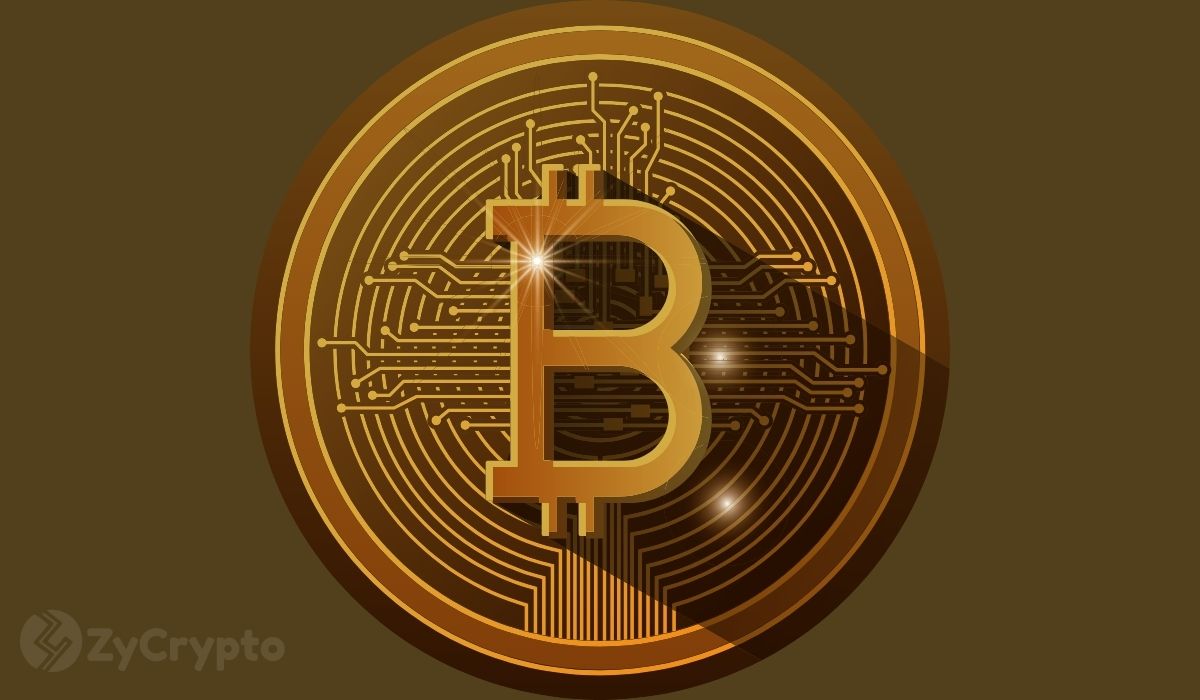
2024-11-1 20:34 |
On October 31, 2008, while most of the world was focused on Halloween costumes and candy, a groundbreaking document quietly appeared on an obscure cryptography mailing list. Titled “Bitcoin: A Peer-to-Peer Electronic Cash System,” the white paper by an anonymous figure known only as Satoshi Nakamoto introduced a radical concept of decentralized digital money. Now, 16 years later, we can fully appreciate the transformative impact it has had on finance, technology, and even society as a whole.
The World Before BitcoinTo understand why the Bitcoin white paper was so groundbreaking, it’s crucial to look back at the financial landscape in 2008. In the midst of the global financial crisis, the flaws in centralized banking systems were laid bare. Bank bailouts, inflation, and a lack of financial transparency left many people disillusioned with traditional financial institutions. Satoshi Nakamoto’s white paper presented a daring alternative: a currency independent of any government or central bank, powered solely by cryptographic technology and a peer-to-peer network.
Source: Bitcoin
Here are some of the reasons why the Bitcoin white paper has been one of the most influential documents of the 21st century.
1. Decentralization: Breaking Free from BanksOne of Bitcoin’s core ideas was that individuals could transfer value without the need for banks or intermediaries. The white paper introduced blockchain technology, a decentralized and transparent ledger system where transactions are recorded publicly and verified by a network of computers. This structure challenged the centralized banking model, granting individuals control over their assets.
Why This Matters: Decentralization put power in the hands of users rather than financial institutions, a model that many crypto projects continue to adopt today. By cutting out intermediaries, Bitcoin aimed to democratize finance and offer a financial network that was truly global and independent of centralized entities.
2. The Birth of Blockchain TechnologyThe Bitcoin white paper was the first to conceptualize a fully functional blockchain—a chain of blocks that each contained transactional data verified by a distributed network. This breakthrough in digital ledger technology is what underpins not only Bitcoin but also thousands of other cryptocurrencies and blockchain-based applications.
Why This Matters: Blockchain is now recognized as a revolutionary technology with applications in fields far beyond cryptocurrency, including supply chain management, voting systems, healthcare, and identity verification. Satoshi’s design solved a longstanding problem in computer science, known as the “double-spending problem,” enabling digital scarcity and security without a central authority.
3. Financial Sovereignty: Ownership of WealthBitcoin offers financial sovereignty, allowing individuals to “be their own bank.” Users can send, receive, and store Bitcoin without relying on traditional banks. Additionally, Bitcoin’s design makes it difficult for any entity to freeze or seize funds, something that has resonated with people living under financial restrictions or authoritarian regimes.
Why This Matters: Financial sovereignty is essential in parts of the world where access to banking is restricted or where inflation erodes savings. The decentralized nature of Bitcoin means that it’s accessible to anyone with internet access, enabling financial inclusion for the unbanked and underbanked.
4. A Hedge Against InflationUnlike fiat currencies, which governments can print at will, Bitcoin has a fixed supply of 21 million coins. This scarcity model makes Bitcoin an appealing store of value, particularly in contrast to inflationary currencies. In recent years, Bitcoin has been called “digital gold” due to its potential to preserve value over time.
Why This Matters: For individuals and institutions worried about inflation and currency devaluation, Bitcoin provides a hedge. As central banks around the world continue to print money, the fixed supply of Bitcoin becomes even more attractive for those seeking an inflation-resistant asset.
5. Inspiration for a New Wave of Technological InnovationThe Bitcoin white paper didn’t just introduce a new form of currency—it ignited an entire industry. Ethereum, for example, extended the blockchain concept by enabling smart contracts, while other projects have focused on privacy, scalability, and other technological improvements. The cryptocurrency and blockchain industries are now worth trillions of dollars, with a community of developers, investors, and advocates worldwide.
Why This Matters: Beyond Bitcoin, the white paper laid the groundwork for the development of decentralized finance (DeFi), non-fungible tokens (NFTs), and Web3. These innovations are reshaping how we think about finance, art, ownership, and even the structure of the internet itself.
6. The Rise of a Global, Borderless EconomyBitcoin’s peer-to-peer nature allows for instant, cross-border transactions without intermediaries. Traditional international transfers can be costly and slow, especially for people in regions with limited banking infrastructure. Bitcoin makes it possible to send and receive funds globally with minimal fees and no exchange rate restrictions.
Why This Matters: For expatriates sending remittances to their families, for small businesses, and even for humanitarian efforts, Bitcoin offers an alternative to slow and expensive international money transfers. It’s creating a financial network that operates outside of traditional, often exclusionary systems, making global commerce more accessible.
7. Privacy and Pseudonymity in Financial TransactionsBitcoin transactions are pseudonymous, meaning users aren’t required to reveal their identities as they would in a traditional bank. While Bitcoin’s ledger is public, individual identities can remain hidden, offering a level of financial privacy not available in the banking world.
Why This Matters: Financial privacy is a hotly debated issue, especially in an era where governments and corporations have unprecedented access to personal data. Bitcoin’s pseudonymity offers an option for those who value privacy, though it also raises discussions about balancing privacy with security.
8. A Challenge to Traditional Monetary PolicyBitcoin’s deflationary model, based on a fixed supply, starkly contrasts with the inflationary policies of most central banks. This challenge to fiat currency systems is especially relevant in times of economic uncertainty, as many people are looking to Bitcoin as a stable alternative to traditional investments.
Why This Matters: For those who are skeptical of central banks’ decisions, Bitcoin offers an alternative that is resistant to government policies. The decentralized and deflationary nature of Bitcoin could eventually influence monetary policy as more people see it as a viable form of currency.
9. The Question of Satoshi Nakamoto’s Identity: An Ongoing MysterySatoshi Nakamoto’s identity remains unknown, which adds an intriguing mystique to the Bitcoin story. The anonymity of Bitcoin’s creator means that the project is truly decentralized, as there is no central authority or figurehead to lead or manipulate it.
Why This Matters: Satoshi’s anonymity has allowed Bitcoin to become a global, trustless system without any single point of failure. The creator’s absence has contributed to Bitcoin’s decentralization, allowing it to be shaped by the community rather than an individual’s vision.
10. The Cultural Impact: Bitcoin as a Symbol of ResistanceOver the years, Bitcoin has become more than just a currency; it’s a symbol of resistance against financial oppression. For its advocates, Bitcoin is a way to opt out of a system they feel is flawed and corrupt. This cultural significance has solidified Bitcoin’s place in history and made it a rallying point for those advocating for economic freedom.
Why This Matters: Bitcoin’s influence goes beyond technology and finance—it represents a movement. For many, it’s a vote of no confidence in the traditional financial system and a call for a more transparent, equitable way to manage value and wealth.
A Legacy of Innovation and TransformationFifteen years after its release, the Bitcoin white paper is still resonating, sparking innovation, debate, and economic shifts worldwide. It’s the foundation of an entire industry that has expanded into digital assets, blockchain technologies, and decentralized applications, each building on Nakamoto’s original vision. Whether you view Bitcoin as an investment, a currency, or a cultural phenomenon, its significance cannot be overstated. Nakamoto’s nine-page document has undoubtedly changed the world—and its legacy is only beginning.
12 Spooky Facts you Didn’t Know About the Bitcoin white paper: Short and Sweet: At just nine pages, the white paper managed to redefine finance. Brevity with impact—Satoshi didn’t waste a single word. No Mentions of Blockchain: The word “blockchain” doesn’t appear once. Satoshi only referred to a “chain of blocks,” and the term blockchain came later as the idea evolved. The Word Bitcoin only appears twice:It’s likely that Satoshi named Bitcoin late in the process. It is a compound of the words bit and coin, and probably inspired by BitTorrent. Amazingly, the word “Bitcoin” only appears twice in the whitepaper. Yes, we checked. Roots in Failed Projects: Bitcoin wasn’t the first attempt at digital cash. Satoshi acknowledged influences like Wei Dai’s b-money and Adam Back’s Hashcash, both key stepping stones. Impeccable Timing: Released right in the heart of the 2008 financial crisis, the white paper’s timing felt almost prophetic, responding to widespread distrust in banks and centralized systems. The Pseudonymous Satoshi: Satoshi used British spelling (like “favour”) in the paper and avoided slang, sparking endless debates about their origin—no one knows if Satoshi is a single person or a group. A Small Initial Audience: The paper was first sent to a cryptography mailing list, mostly overlooked. It wasn’t until 2010 that Bitcoin started gaining traction with early adopters. No Mention of Price or Value: Now worth thousands of dollars per coin, the white paper didn’t talk about Bitcoin’s potential monetary value—only its functionality as a “peer-to-peer electronic cash system.” Anti-Bank Sentiment Hidden in Code: The first block of Bitcoin includes a hidden message: “The Times 03/Jan/2009 Chancellor on brink of second bailout for banks”—a nod to the dissatisfaction with banking bailouts. Open Source Roots: From day one, Bitcoin’s code was open-source. Satoshi believed in decentralization to the core, making the protocol freely available for anyone to use or adapt. The Number 21:In numerology, the number 21 is associated with balance, harmony, cooperation, and diplomacy. It represents independence, leadership, and self-reliance. It is often seen as a symbol of new beginnings, ambition, and assertiveness. 21 million Bitcoin, 210,000 blocks per halving, The Bitcoin whitepaper was published on the cryptography mailing list at exactly 2:10pm EDT Reformation Day: On October 31st, 1517, Martin Luther nailed his 95 theses on the door of the Catholic church. This famously led to the separation of church and state. October 31st is now commonly celebrated as “Reformation Day.” On the same day, October 31st, 2008, the Bitcoin whitepaper was published, a historic day that is now leading to the separation of money and state. origin »Halloween Coin (HALLO) на Currencies.ru
|
|






















